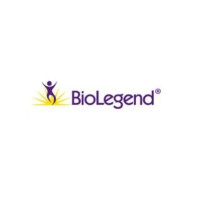DRAQ5™ Catalog# / Size 424101 / 50 µL Regulatory Status RUO Other Names Live/Dead Staining, Dead cell exclusion dye, Cell viability dye Description DRAQ5™ is a far-red emitting, anthraquinone compound that stains nuclei in live cells. It is permeant to live cells and thus can be used for cell cycle analysis and/or staining of nucleated cells. It is optimally excited at 568 nm, 633 nm, and 647nm and can be detected using 695LP, 715LP, and 780LP filters. DRAQ5™ can also be used in cell imaging and is a good replacement for DAPI, as it does not get excited by UV or Violet lasers and is sub-optimally excited by the 488 nm laser. DRAQ5™ can be combined with FITC, PE, and other UV or violet excitable dyes for multi-color analysis. Product Details Preparation DRAQ5™ is supplied at 50 µL per vial (5 mM). Concentration Lot-specific (to obtain lot-specific concentration and expiration, please enter the lot number in our Certificate of Analysis online tool.) Storage & Handling DRAQ5™ should be stored between 2°C and 8°C upon receipt. Application FC, ICFC - Quality tested ICC, IHC-F, IHC-P - Verified Recommended Usage DRAQ5™ is a trademark of Biostatus Limited. Application Notes DRAQ5™ is a cell-permeant DNA binding anthraquinone dye that intercalates between A-T bases of dsDNA. Due to its cell permeability, this dye is useful for assessing DNA content and cell cycle but is not suitable to be used as a viability dye. In microscopy applications, DRAQ5™ is also useful as a nuclear counterstain for both live and fixed specimens. It is a far-red emitting dye with optimal excitation/ emission peaks of 633nm/ 695nm, respectively, (when intercalated into DNA) that can be detected in the Alexa Fluor® 647, APC and Alexa Fluor® 700 channels. For use in cell cycle analysis, the optimal concentration must be determined for each cell type. Also, due to the wide emission spectrum and the brightness of DRAQ5™ off the 633nm red laser and the dim emission intensity of the APC/Cyanine7 or APC/Fire™ 750 fluorophores, flow cytometric panels sho
-
 Currency: USD
|
Currency: USD
|
- USD (US Dollar)
- EUR (Euro)
- CNY (Chinese Yuan)
- GBP (British Pound)
- JPY (Japanese Yen)
- CAD (Canadian Dollar)
- AUD (Australian Dollar)
- SGD (Singapore Dollar)
- MYR (Malaysian Ringgit)
- TWD (New Taiwan Dollar)
- HKD (Hong Kong Dollar)
- NZD (New Zealand Dollar)
- ZAR (South African Rand)
- CHF (Swiss Franc)
- XAF (Central African CFA)
- XOF (West African CFA)
- RUB (Russian Ruble)
- BYN (Belarusian Ruble)
- KZT (Kazakhstani Tenge)
- KGS (Kyrgystani Som)
- INR (Indian Rupee)
- EGP (Egyptian Pound)
- VND (Vietnamese Dong)
- KRW (South Korean Won)
- MXN (Mexican Peso)
- ARS (Argentine Peso)
- TRY (Turkish Lira)
- SAR (Saudi Riyal)
- AED (UAE Dirham)
-
 Language|
Language|
- Promote Business |
- Medical Finance



